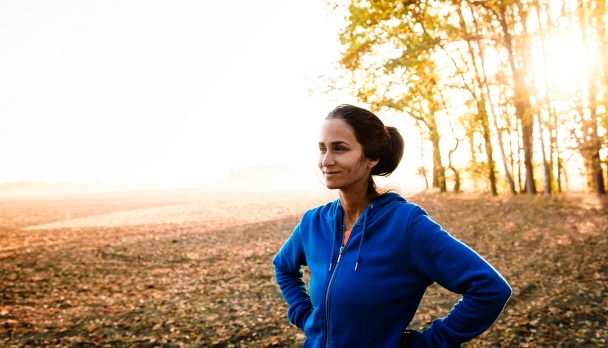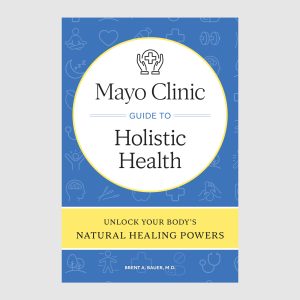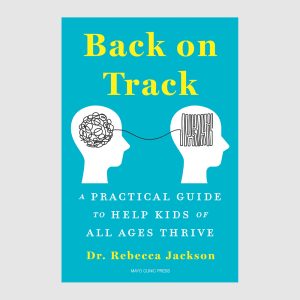
Most fitness classes treat stretching like the bread that protects the insides of a sandwich. You start the class with stretching. Then, you do your workout (the sandwich fixings). Afterward, you stretch yet again.
However, if you’re crunched for time, you might wonder what would happen if you skipped the stretches.
Would you soon become tight, sore and injured?
Not necessarily, says Andrew R. Jagim, Ph.D., a sports medicine specialist with Mayo Clinic. To understand why, it helps to know some terminology, what the science says about stretching. It also helps to know some stretching alternatives that may provide the same results in less time.
What happens when you stretch?
Let’s say you’re doing the quintessential static hamstring stretch from your middle school gym days. The three hamstring muscles lengthen as you lean forward over your outstretched leg. As they do so, nearby blood vessels may expand, increasing blood circulation. At the same time, the stretch may bring about changes in your nervous system and tissues that help to temporarily blunt pain and stiffness.
When you stop stretching, the muscles then return to their prestretched length.
Types of stretching
The hamstring stretch mentioned above is called a static stretch. Once you’re in position, you hold and remain still in the stretch position for 10 seconds or longer.
However, a second type of stretching may offer more benefits, particularly for individuals preparing for any kind of sport or physical activity. Dynamic stretching involves repeatedly moving certain joints, safely and gently, through their full range of motion. It could include arm, ankle or hip circles, leg and arm swings, walking lunges, and inchworms, among many other dynamic stretching movements. This kind of movement is a great way to prepare your muscles, connective tissues and nervous system for more dynamic and explosive activities such as a fast-paced basketball game or a strenuous boot camp-style workout.
What are the benefits of stretching?
If you perform only one stretch one time —never to repeat it again — you’ll experience only fleeting changes in your muscles, blood vessels and nervous system.
However, if you stretch daily, you can maintain some of the following benefits.
Improved blood circulation
For one study published in the Journal of Physiology, researchers asked volunteers to perform a series of static stretches for their hips, knees and ankles five days a week. Other study participants served as a control group and made no changes to their lifestyle. After 12 weeks, compared with the control group, the participants who stretched had improved blood vessel function and improved blood pressure. Though the study looked specifically at a type of static stretching, dynamic stretching likely offers the same benefits, says Dr. Jagim.
Less postexercise tightness and soreness
A few minutes of easy cardiovascular activity followed by dynamic stretching may help speed recovery and ease stiffness after hard training sessions. “Dynamic stretching can help clear out metabolic byproducts from your exercise session while also helping with oxygen and nutrient delivery from the increase in blood flow,” says Dr. Jagim. “It’s a great way to recover from strenuous training.”
Increased range of motion
Muscles and joint mobility can fluctuate over time, making it more challenging to do things like reach that itchy spot in the middle of your back. Overly tight hips and ankles also can shorten your stride, eventually making it more difficult to walk quickly and safely. However, regular static or dynamic stretching may help slow these age-related losses in flexibility and joint mobility.
Stretching and injuries
“Want to reduce injuries? You need to stretch!”
You’ve likely heard the above advice countless times.
However, research doesn’t support it, especially regarding static stretching.
“The research over the past couple of decades hasn’t found that static stretching offers much benefit in terms of reducing risk of injury,” says Dr. Jagim.
On the other hand, when done as part of a warm-up, dynamic stretches such as walking lunges, butt kicks and hip circles may offer some injury-risk reduction, though study findings conflict. In addition, dynamic stretching helps improve blood flow, neuromuscular activation and joint mobility, all of which can prime the body for rigorous activity and lead to performance benefits.
The downsides of static stretching
Static stretching isn’t dangerous as long as you use slow, controlled movements and don’t overstrain. However, in at least two situations, the cons may outweigh the pros.
When the margins matter
Static stretching can temporarily weaken your muscles. This loss in strength and power can negatively affect your performance in certain sports.
For this reason, many coaches have moved away from static stretching and more toward dynamic stretching, especially during warm-ups. “Dynamic stretching gets the joints and connective tissues warmed up so you have a full range of motion during your workout,” says Dr. Jagim. “It can also help wake up the neuromuscular system, activating and priming certain muscle groups for faster contractions.”
When time is a factor
If you don’t have enough time to fit in strength training, cardio and stretching, there’s good news. When done with proper form, your strength training workout can double as your stretching routine. According to a review of 11 randomized controlled trials involving 452 participants, strength training offers the same range-of-motion benefits as static stretching.
“If we just looked at athletes and looked at what was more effective, I would say strength training is more effective,” says Dr. Jagim. “It gets you stronger, obviously, but using the proper form and technique can also give you the same benefits of stretching. You are moving through a full range of motion. You are improving joint mobility. You get a lot of the same benefits and also more.”
Dynamic stretching vs. static: What’s best for you?
The right stretching routine for you will depend on your fitness and goals.
If you’re an athlete competing in gymnastics, dance or another flexibility-dependent sport, static stretching will likely remain a part of your routine.
Similarly, if you’re an older adult with poor balance, you may want to start with static stretching. Under the guidance of a healthcare professional, you can eventually progress to dynamic stretching as your strength, range of motion and, more importantly, balance improve, says Dr. Jagim. “Static stretching helps you to ease into exercise without as much of a risk of falling,” he says.
On the other hand, you’ll want to choose dynamic stretching for the following situations:
- Warming up for a weightlifting or cardio session.
- Cooling down after a workout.
- Using an active recovery workout between challenging sessions.
Finally, if you’re short on time, know this: It’s not a big deal if you skip stretching. Remember, as mentioned earlier, when done with proper form, strength training also improves range of motion, just as stretching does. Similarly, if you’re after increased circulation, easy cycling or another form of cardio also will do the trick.
“People feel pressure to do a cooldown that includes stretching,” says Dr. Jagim. “However, if you are crunched for time, it’s better to get in your full workout and move on with your day than to cut your workout short so you have time to stretch.”

Relevant reading
Mayo Clinic on Prostate Health, 3rd Edition
Mayo Clinic on Prostate Health, 3rd Edition is an easy-to-read yet comprehensive guide to preventing, understanding, treating and living with prostate disease. Advances in research, an explosion in sophisticated imaging technology and new medical procedures have allowed for earlier diagnosis of prostate disease and more personalized treatment.




















